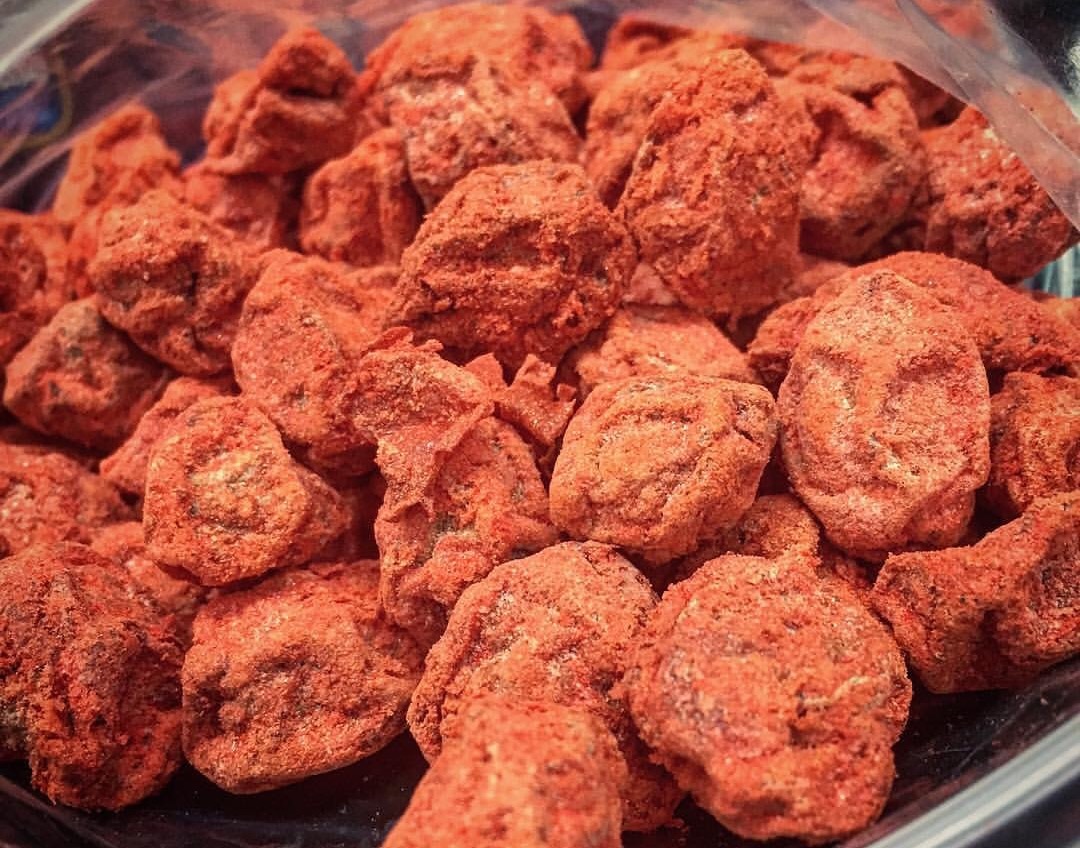Commonly spelled as champoy, rarely as sampóy.
Tsam·póy is a popular Chinese sweet in the Phlippines. It is made from the Myrica rubra fruit called yangmei, which has also been called Chinese bayberry or Chinese strawberry. The raw fruit at its prime is a briliant red (see photo below), but the preserved fruit that is sold as a treat is dark brown to black in color. Each fruit has a single seed in the center.

The origin of the name may somehow be related to Chenpi (陳皮), which in Hong Kong is transliterated as Chanpui and literally means “citrus peel.” A popular Cantonese sweet is called Chanpuimui (陳皮梅 or “tangerine-peel plum”).
There is a native Filipino candy that’s called tsampoy na sampalok (tamarind champoy) — it is basically ripe tamarind simmered in a salt-and-sugar mixture, drained, then rolled into balls.
Difference Between Champoy and Kiamoy
Another Chinese treat popular in the Philippines that can be considered the salty counterpart of the black champoy is the red kiamoy, which is made from plum and not the Myrica berries.
Champoy is moist.
Kiamoy is dry.
Champoy is dark red to black.
Kiamoy is pink to red.
Champoy is sweet.
Kiamoy is salty.
Champoy is also the name of a popular comedy television show that aired in the Philippines in the 1980s. It featured the larger-than-life talent Subas Herrero.
MGA KAHULUGAN SA TAGALOG
tsampóy: palumpong (Myrica rubra) na may kumpol o pumpon ng mga berry
tsampóy / sampóy: inasnan o minatamis na pinatuyông prutas






